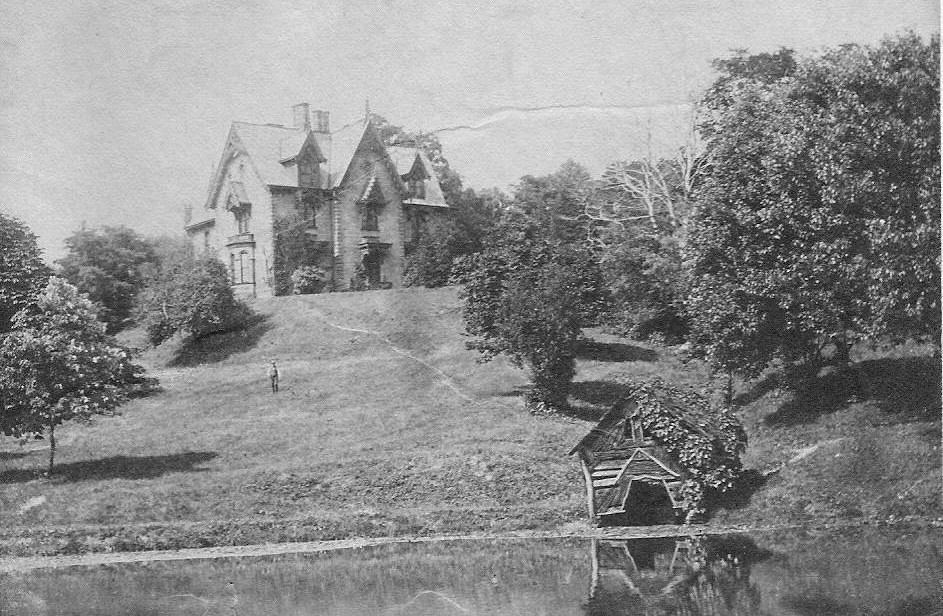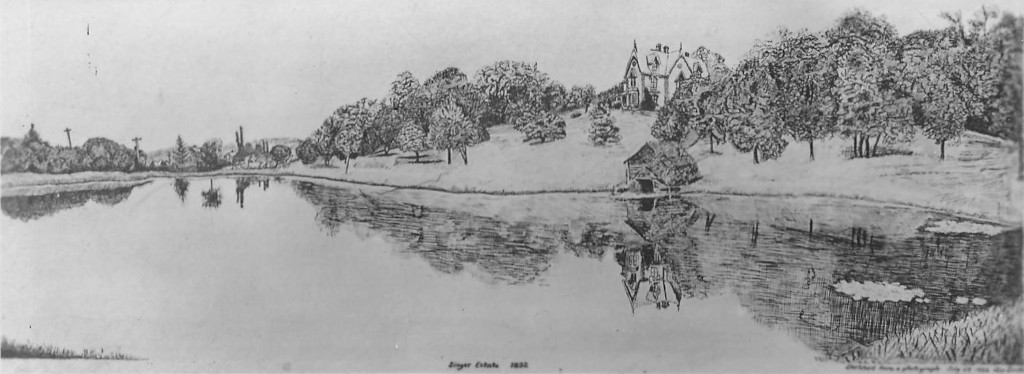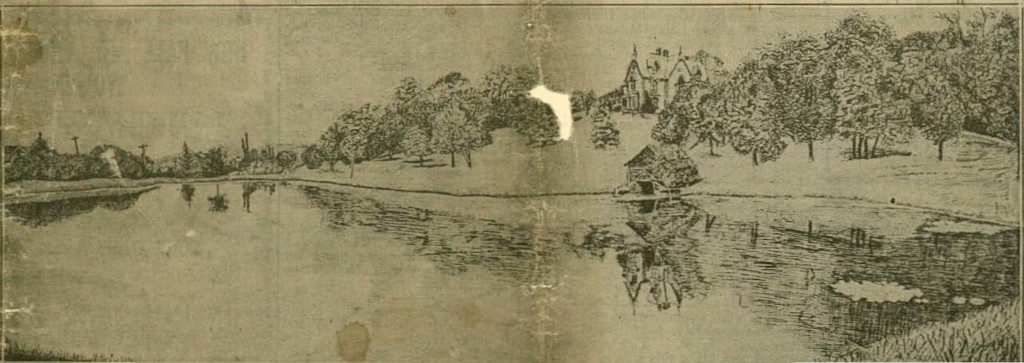

Wilkinsburg Public Library Digital Archives

From the Wilkinsburg Sentinel, 1922:
The above picture, of one of the old landmarks of Wilkinsburg, which was given to the Sentinel by Harry S. Smith, 401 Whitney avenue will recall to many of our citizens one of the beauty spots in Wilkinsburg which has been destroyed in the rapid growth and development of the borough.
The old Singer mansion and Wilkinsburg have always been closely associated. People from all over United States, who have in times past visited Wilkinsburg carried away with them the picture of the old stone mansion, with its spacious grounds, and today, when our residents chance to meet some former visitor to Wilkinsburg, in their travels, the question is often asked, “Is the Singer mansion still standing?”
The house, which at present faces on Singer place, East Wilkinsburg, was built during the Civil war by John F. Singer, of the firm of Singer-Nimick, owners of the well-known rolling mills on the South Side. Mr. Singer and Mr. Nimick purchased adjoining tracts of land in the vicinity of the present boundary lines of Hill avenue and Frankstown avenue. Wood street, and on over the hill beyond Mill street. Mr. Singer had twenty-one acres, which took in the land between Hill avenue and the city line and extending over the hill beyond Mill street. Upon a knoll overlooking Brushton, Homewood, East Liberty to the west, and Swissvale, Rankin and even as far as Braddock to the east, he erected the well-known Singer home. It is said that the house cost over one hundred thousand dollars which was a vast sum in those days and those who have inspected the wonderful construction of the house can well believe it.
———
The exterior is of stone and the gothic style of architecture is evident in the construction. The interior is finished in hardwood throughout. In the dining room the woodwork is elaborately carved and throughout the house the door knobs are of silver. It is stated that the tile used in the kitchen floor was brought from England and that workmen came all the way from England to set it. The floor and stairs steps in the hall are made of marble. While the house was being built, the Singer family, in which there were the father and the mother, three daughters and two sons, occupied a smaller house, erected for a lodge house, which stood at the massive entrance to the grounds, near Hill avenue and Wood street. Back of this lodge house, which many of our people remember, were the stables, where Mr. Singer kept some very fine horses.
Aside from the lodge house and the residence there was a frame house over the crest of the hill, where Mill street is now located, which was occupied by the gardener, and Thomas Russell, one of our well-known citizens, who resides at 900 Wallace avenue, was assistant gardener and lived in this house from 1867 to 1869. Mr. Russell says the Spring house was located near this frame house, with a tool room over it and a duck pond near by. There also was the stable for the cows, which supplied milk for the Singer family. the first floor of the small stone house, which adjoins the mansion, was used to store the ice which was cut from the lake during the winter, and the second floor was fitted up as a billiard room.
The lake, which was supplied from several springs on the hillside, was one of the main attractions of the estate and was very popular with the boys of Wilkinsburg. On warm summer evenings little William M. Turner, Willie G. Ewing and other town boys hied to the lake and oh boy, such fun “swimmin’.” Then when the wintry days came and the lake was covered with ice these same boys and many girls skated to their heart’s content. Fishing was also a popular pastime as the lake contained a variety of fish, among them some gold fish. . . .
The boat house seen in the picture was the shelter place for the skiff in which the Singer family enjoyed many boat rides on the lake, and up over the hills were orchards and vineyards. Mr. Russell state that many barrels of wine were made from the grapes and extensive gardens supplied the table with vegetables.
After Mr. Singer’s death the house was rented out, and Mrs. Singer traveled aboard for years. The house was purchased about 18 years ago by Mr. Dowler, who lived on Hill avenue at that time, and a club was organized, called the University Club, but the venture was not successful. When the Pennwood Club was organized, the Singer house was selected for a club house, but the idea was abandoned later. Carl Baldridge bought the house some years ago, and it is still owned by him, and occupied by the members of the Clover Club, a group of business and professional men of Pittsburgh and the Westinghouse concerns.
The ground was sold to real estate firms and laid out in building plots, and today, where once our boys skated and swam, stand some of the finest residences in Wilkinsburg, on Singer place. Where vineyards covered the hills, other comfortable homes have been erected, and the springs supply pure drinking water for many of the occupants. Here and there a lone pine tree stands as a relic of the beautiful grounds.
Some of our citizens regret the fact that the Singer estate could not have been purchased for a park for Wilkinsburg, for within its boundaries were the very things that would complete the desirability of Wilkinsburg as a dwelling place, a lake that could be used as a swimming pool, and for canoeing in summer and skating in winter; a house ideal for a community center, and spacious grounds for picnics and outings.
Wilkinsburg Public Library Archives:
Wilkinsburg Sentinel, September 15, 1922.Ilka M. Stotler, research and writing, The Singer Place in Wilkinsburg. Paper read before the Wilkinsburg Historical Society in 1954.